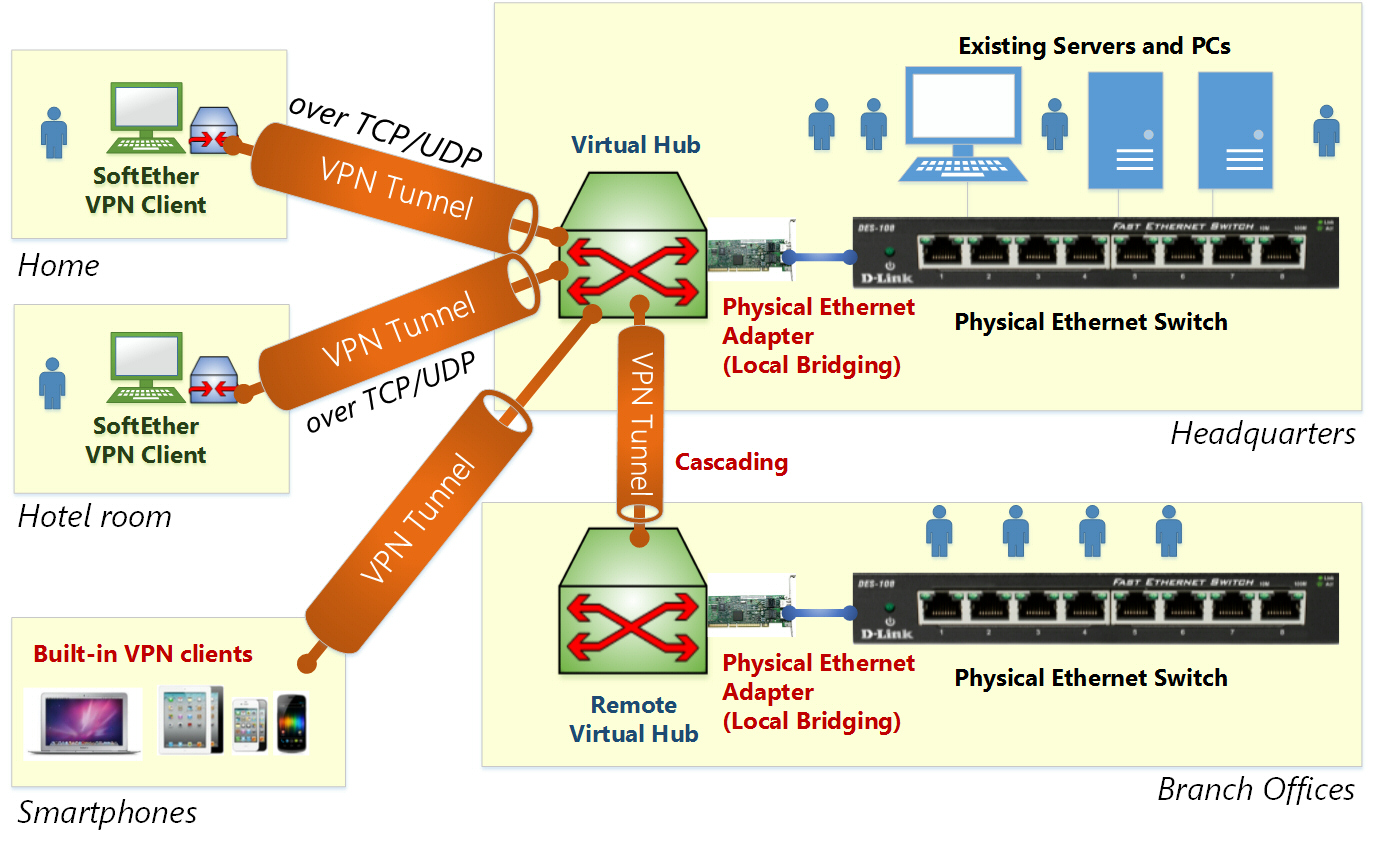OpenVPN is a tried and true VPN solution. It's totally secure and infinitely configurable. You can install and run this software without relying on a third party, but the fact that it’s open source and free is what really makes it stand out. OpenVPN can be a little daunting to configure the first time you jump into it, but once you get your configuration worked out, it’s a pleasure to use. After you have the software running on your network, it’s possible to seamlessly perform a great number of tasks. One of the most popular and practical uses for OpenVPN is its ability to enable secure surfing and home network access—whether you're out traveling or you're on an open wifi access point. It can also be used to connect separate remote networks together into one large network that is fully routable. As you can see, there’s really no limit to what you can do with OpenVPN.
VPN software allows you to establish a secure, point-to-point connection over the Internet, in essence letting you connect to UDelNet as if you were on campus. We recommend you use Cisco's AnyConnect VPN client to connect to UD, and have pre-configured versions of AnyConnect for Windows, Macintosh, and Linux systems. OpenVPN does some odd stuff with routing (as compared to other VPN solutions) - the connection the clients get is on a /30 network for each individual client for easier compatability with windows, so thats why youre seeing the 252 netmask. You can change this behavior if all your clients use linux. Oct 20, 2020 The Cisco VPN Client is a software that enables customers to establish secure, end-to-end encrypted tunnels to any Cisco Easy VPN server. The client can be preconfigured for mass deployments and initial logins require very little user intervention. FWIW, this VPN belongs to a large multi-national company which has a lot of security restrictions, and connecting requires a token that changes every 60 seconds, so it's not just a little network someone set up in their basement. So here are my questions: 1. Can I connect to a Cisco VPN using OpenVPN (or some other open-source client)?
For the purposes of this article, I'm going to demonstrate how to set up OpenVPN on a typical home network. The following configuration will give your client PCs secure internet access anywhere—as well as full access to your home network. The information contained in this tutorial will be aimed at Windows users who have a router that has capabilities similar to the Linksys WRT54G.
OpenVPN Installation
First, download the install file from http://openvpn.se/download.html (the file is called openvpn-2.0.5-gui-1.0.3-install.exe). This is the GUI version of OpenVPN. It’s basically good ole OpenVPN with a minimal graphic interface that is accessible from the system tray.
Install this file on the computer that's going to be your OpenVPN server first. The computer you choose to use should be turned on and running OpenVPN whenever you wish to have your virtual network accessible.
If you have any previous versions of OpenVPN installed, you should shut down any running instance of it before running the install file.

Openvpn Connect Windows
Next, run the install program. During the installation you can choose whether the GUI program is started automatically at system startup. (The default is yes.) I recommend leaving all of the options on the default, and, as a result, all of the following instructions assume that you have installed the program in the default directory. Remember, at the end of the install you will need to reboot the machine.
